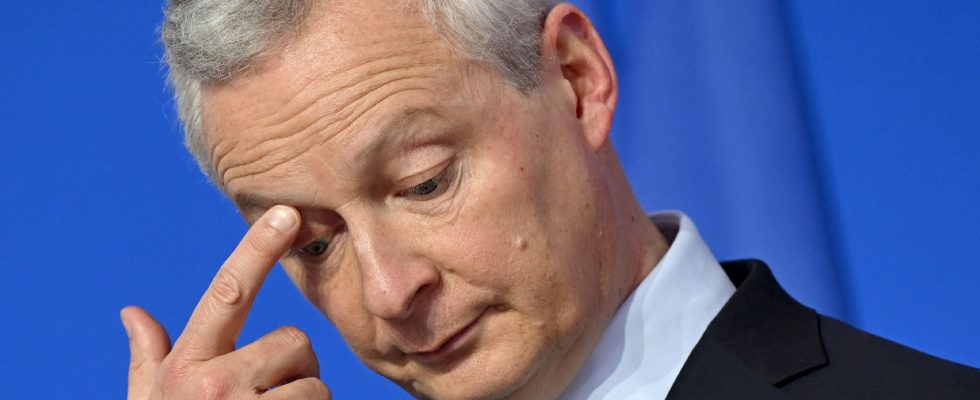Officially, everything is under control. Certainly, the public deficit in 2023 was higher than expected but it should gradually and continuously decrease, falling below 3% of GDP in 2027, according to the budgetary stability program that France is preparing. to be submitted to the European Commission. While the restoration of accounts requires a significant effort on public spending, growth would accelerate to reach 1.8% at the end of the five-year term: a hypothesis considered unrealistic by economist Eric Heyer, director of the analysis and forecasting department. ‘OFCE.
L’Express: The budgetary stability program, which will soon be sent to the European Commission, was presented this Wednesday April 17 to the Council of Ministers. He expects public deficits to return below 3% of GDP in 2027. How do you view this roadmap?
Eric Heyer: She seriously lacks credibility. This program details, year by year, forecasts for growth, public deficits and France’s debt until 2027. The main idea is budgetary adjustment. That is to say, clear and lasting cuts in public spending. However, the government is making the strong assumption that this budgetary adjustment will have no impact on activity. It is even the opposite since growth will gradually reaccelerate to reach 1.8% in 2027, a level higher than the potential of the French economy. We are in magical thinking here. The risk is that activity is weaker than expected, tax revenues less dynamic and that, ultimately, the deficit reduction objective will not be achieved.
Especially since in Europe, we will not be the only ones to do this tightening of screws. Of course, in the past, episodes of fiscal recovery in Canada and Sweden, in particular, quickly bore fruit, but the global growth context was more buoyant. Above all, these two countries had devalued their currencies to boost activity. Which obviously we cannot do with the euro!
Precisely regarding the announced budgetary adjustment, the government has not detailed the amount of budget cuts necessary from 2025. How many savings would be necessary to stay on the planned course?
Regarding budgetary efforts, the government has planned 10 billion euros of additional structural effort this year, 20 billion next year. To maintain the road map, each year, public spending would have to be reduced by around fifteen billion euros. This means that by 2027, we will have to find almost 50 billion in savings. It is not infeasible but the step is high: excluding inflation, this means that public spending will only increase by 0.4% in 2026 and 2027 after quasi-stability in 2025. France has never succeeded to control spending over such a period. Above all without impact on growth. The Meccano envisaged is something of a miracle.
How do you explain the poor public deficit figures for 2023?
By an error of judgment and anticipation: a matter of the elasticity of tax revenues. In 2022, tax revenues were significantly higher than expected given the level of growth. The government saw this as confirmation of the adage “too much tax kills tax”. In short, revenues increased sharply even as tax rates fell. Except that the elasticity of budgetary revenues to growth is very volatile. When Bercy completed its draft budget for 2023, they anticipated a continuation of this phenomenon, which did not happen. However, they calibrated expenses according to anticipated revenues. The awakening last fall was brutal.
You talk about errors of judgment, have there been others in recent years that would explain part of the complicated budgetary situation in which the country finds itself?
I find two, a political error and an economic error. The first is the decision at the start of Emmanuel Macron’s first five-year term to gradually eliminate the housing tax. Initially, this was only to benefit the working and middle classes but the Constitutional Council forced the executive to extend this decision to all households. This decision was a budgetary disaster since the State deprived itself of around twenty billion in revenue at cruising speed. A windfall that we miss today.
The second error is political and concerns the way in which we protected the French from the inflationary shock linked to soaring energy prices. The energy shield cost nearly 80 billion euros over 2022 and 2023. This shield, which aimed to limit the inflationary surge, once again benefited the entire population when it would undoubtedly have been preferable to have a much more targeted policy of checks or aid. In fact, state support has been made invisible, which today makes the acceptance of tax increases very difficult. The energy shield has further eroded consent to tax. Some of this public money has been thrown out the window.
.
